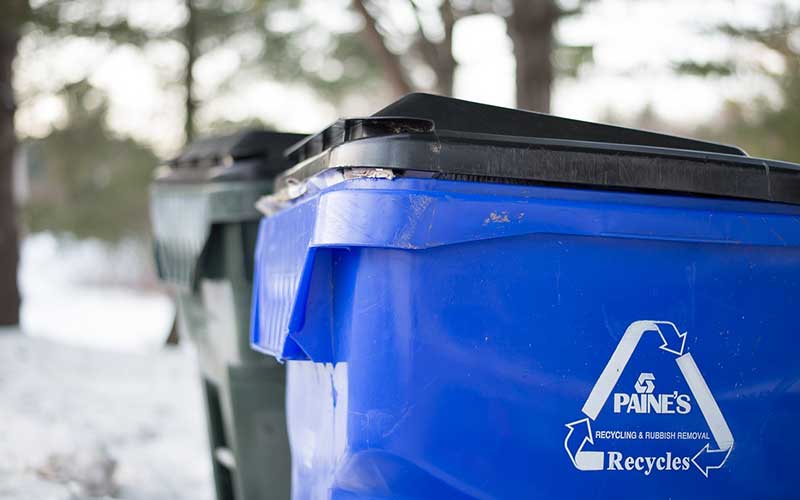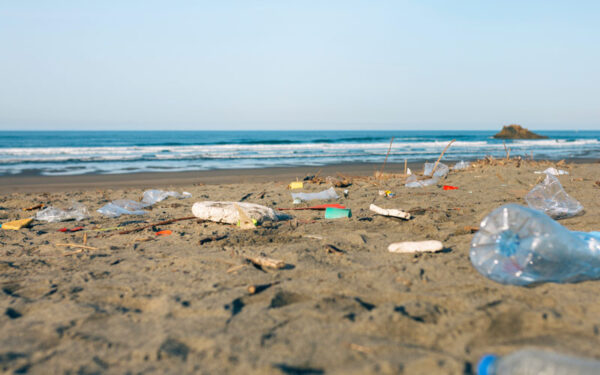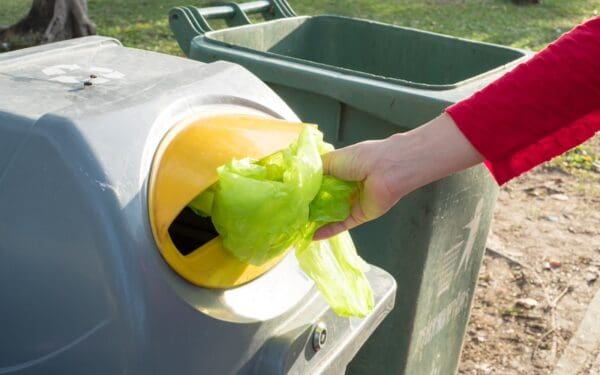
Curbside recycling is a disaster, but with modernized bottle return programs, New England can increase recycling rates, save money, and cut climate-damaging emissions. Photo: Pixabay.
Despite many good intentions, curbside recycling has turned out to be a disaster. In 2017 alone, 5.9 billion pounds of plastic beverage containers were sold, but only about 333 million pounds were recycled into new containers. Nearly all of the remaining plastic bottles (more than 5 billion pounds) ended up buried in a landfill or burned in an incinerator – each of which releases toxic pollution into our communities.
Glass bottles don’t fare much better. Nationwide, only about 40% of glass containers collected curbside are recycled into new bottles or fiberglass. Some states, like Rhode Island, don’t recycle glass at all. In fact, all of the glass bottles that Rhode Island collects through curbside recycling are crushed up and used to cover the state’s only landfill each night.
Meanwhile, the costs of curbside recycling have skyrocketed. As recently as four years ago, cities and towns in Connecticut generated tens of thousands of dollars in revenue from single-stream recycling programs. Today, many of those same cities and towns must spend $200,000 to as much as $700,000 per year on single-stream recycling.
But that doesn’t mean recycling is dead. We have solutions. One of the best systems for recycling our plastic, glass, and aluminum containers is the bottle return program, also known as the “bottle bill” or deposit-return.
How do bottle return programs work?
A bottle return program requires you to pay a small deposit (usually 5 or 10 cents) when purchasing a single-use beverage container. Once you take your final swig of soda or beer, you can bring the empty bottle to a participating grocery store, liquor shop, or redemption center and get your 5 or 10 cents back. It’s like a rebate program.
Programs like this have been active for decades, and both Michigan and Oregon are proof that they work. With a 10-cent deposit on beverage containers, both states have a bottle return rate of more than 90%.
Compared to those collected in curbside recycling, beverage containers gathered through bottle return programs are much more likely to be recycled. On average across the U.S., 88% of plastic containers returned through these systems are recycled (and not necessarily into new bottles), while 98% of redeemed glass containers are processed into new bottles or fiberglass.
It’s time for New England to step up its bottle return game.
Although some New England states pioneered the bottle return system, they have since fallen behind. Connecticut, for example, still relies on insufficient 5-cent deposits that don’t apply to many of the new beverages, like energy drinks, that have become popular since its program started. As a result, Connecticut has the lowest redemption rate – just 50% – of all bottle return states. What’s more, because its program excludes liquor and wine bottles, as well as juice, iced teas, sports drinks, and energy drinks, tens of thousands of tons of these containers are incinerated each year rather than recycled.
That means Connecticut is missing opportunities to divert recyclable material from the waste stream even as taxpayers are forced to shell out more and more for curbside programs. And it means neighboring communities are forced to live with more air pollution and toxic ash from burning plastic in the state’s seven incinerators.
Rhode Island and New Hampshire, meanwhile, have missed the mark altogether by failing to adopt bottle return programs in the first place. Rhode Island collects only 39% of its plastic bottles via curbside recycling and completely lacks a glass recycling system, making it especially in need of a change. By embracing a bottle return program, the state could more than double its container recovery rate and meaningfully recycle its glass bottles. That would cut the plastic pollution littering our beaches, as well as lower costs for curbside pickup.
Rhode Island needs a bottle return program. And Connecticut’s system desperately needs an upgrade. To maximize recycling, both states should place a 10-cent deposit on all beverage containers, including liquor, wine, juice, iced teas, sports drinks, and energy drinks. This would help reduce litter in our neighborhoods, parks, and waterways; it would keep recyclable material out of landfills and incinerators; and it would lift some recycling costs off of communities.
Bottle Return Programs Move Us Toward Zero Waste
Robust bottle return systems are critical to our transition towards zero waste. Not only do these programs improve recycling rates, but they also allow us to transition to refillable – rather than recyclable – containers. Oregon, for example, has successfully launched a refillable beer bottle system that utilizes its existing bottle return infrastructure. This approach not only puts environmentaly responsible packaging into practice, but it also reduces Oregon’s waste, helps participating breweries save money, and cuts climate-damaging emissions.
With plastic pollution now a full-blown global crisis and curbside recycling a growing failure, it’s time to move toward a future centered on reuse programs. By adopting a bottle return program in Rhode Island, and improving Connecticut’s current system, southern New England has an opportunity to drastically cut our waste and serve as a model for the entire region to follow.




